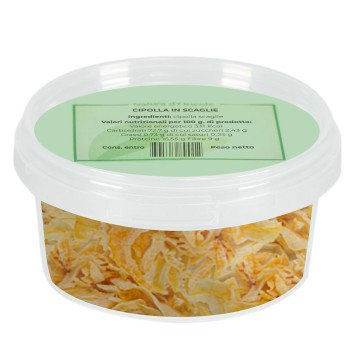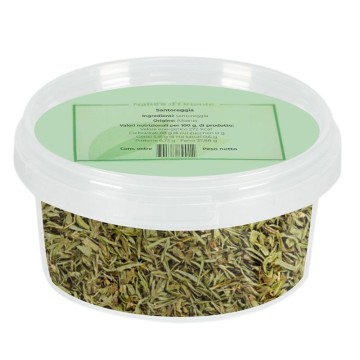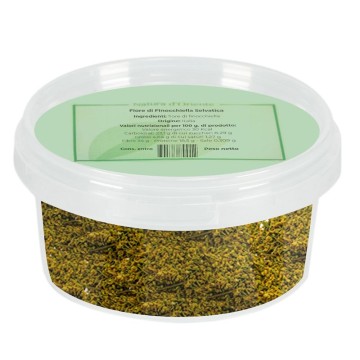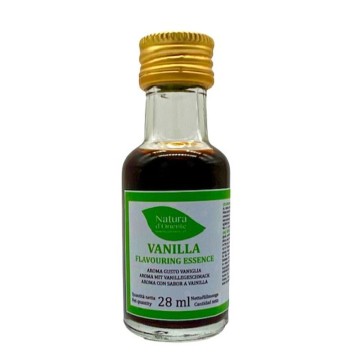Onion is one of the most used condiments in the world, in many Italian and international recipes. It is considered indispensable in the kitchen, and this dried flaked version is ready to use in a convenient way. With onion flakes you avoid the effort of chopping the whole bulbs, still obtaining its unique flavor for preparations in the kitchen.
The flakes come from onions chopped and dried in convenient flat strips. Dried chopped onions have all the sweetness and flavor of fresh onions. The flavor profile with notes between sweet and pungent, provides less bite than raw fresh onions in terms of intensity. They enhance the other ingredients used in recipes, and are easy to use without causing the typical tearing when cutting fresh onions.
Onion flakes: properties and benefits
The crushed form comes from the dehydration process of the onion, which makes the flavor more concentrated than fresh onions.
The nutrients in onion flakes are in particular minerals such as iron, calcium, magnesium, manganese, phosphorus, potassium, zinc, copper and selenium.
The flakes, despite a low calorie intake, are also rich in proteins and contain various antioxidants.
It contains many sulfur oxides - the cause of the pungent smell and tearing when we cut the onion. In addition, ground onions contain proteins and various antioxidants. Among the beneficial properties of onions for the body, there is the presence of antioxidant phytochemicals such as quercetin, anthocyanin, allicin and alliin.
These compounds have properties that are useful for the well-being of blood circulation: quercetin is an antioxidant flavonoid that can help regulate blood pressure. In addition, quercetin promotes glycemic balance, acting on carbohydrate metabolism. In addition, this antioxidant is also beneficial for lipid metabolism. The antioxidant compounds in onions can help the body reduce risks to well-being, linked to triglyceride and cholesterol levels. From a nutritional point of view, onions have historically been considered a digestive, purifying and diuretic food. Onions help intestinal well-being, improving the assimilation of food and reducing digestive irritation. They also facilitate the elimination of excess fluids and waste from the body. Onions have also been used in herbal medicine for the well-being of the airways. Increases the fluidity of bronchial secretions and mucus, in cases of congestion and colds. It is a natural expectorant and emollient support, to eliminate phlegm and obtain relief in breathing. The aroma of the onion has these virtues thanks to the presence of compounds such as allicin, sulfides and polysulfides (sulfur compounds).
In addition to its nutritional benefits, the onion has been historically adopted to soothe skin irritations through compresses on the skin thanks to its sulfur and ammonia content. Among the properties of onion flakes, in addition, we can include its shelf life, higher than the fresh version. Drying deprives the chopped onion of most of the moisture, and inhibits the growth of microbes that cause its deterioration.
Using onion flakes in cooking
This version of the onion is practical to include its flavor in recipes in a versatile way. Onion flakes add the flavor of the bulb, and a special crunchiness to cooking recipes. They add the pungent flavor of the onion and, even when roasted, they particularly flavor sauces, creams, sandwiches, salads, pizza and various recipes where you can sprinkle the flakes. The flavor of dried onion is slightly less spicy than the fresh one, and its consistency is much appreciated in some dishes compared to the powdered version. At the same time, even in flakes the lack of humidity of the onion becomes advantageous for adding flavor without excess liquid. The reduction of fibers, moreover, can make the onion flakes more easily digestible.
Savory recipes: it can become an aromatic and crunchy ingredient for soups, broths and stews. Excellent on vegetables and salads. Onion flakes can be inserted into sauces, and are much appreciated on potatoes, egg-based dishes and omelettes. They also combine with legumes, such as the chickpea and chopped onion salad. They are convenient for flavoring and making fragrant savory baked goods, marinades and spice mixes.
Sauces: Onion flakes can be conveniently added to BBQ sauces and spreads such as guacamole, and to create garnishes for meat or tofu in vegetarian cuisine. Meat: The flakes can be used to flavor meats, meatloaf and meatballs, burgers and stock during cooking.
of the roast. Crushed onion can be an ingredient in a dry barbecue rub, devoid of moisture but full of flavor. Sautéed: onion flakes are drier, so be careful not to burn them when frying. Fish: adding onion flakes to aromatic herbs adds flavor to baked fish and other seafood recipes.
As for the doses to use, it is estimated that a small fresh and chopped onion is equivalent to about 1 tablespoon of dried onion flakes. A medium chopped onion can correspond to 2-3 tablespoons of onion flakes. Over time, many varieties of onion have evolved, which are distinguished by many factors (shape, size, color, aroma), including cooking time. For this reason, the version of onion flakes is convenient for every recipe.
Red Pepper Chips with Onion Gravy
Ingredients: 3 large Russet potatoes (1kg in total), sliced very thinly - 2 tbsp olive oil - 2 tsp coarsely ground black pepper - 2 tsp olive oil - 1 tbsp onion flakes (equivalent to 1 small onion, chopped) - 2 green onions, thinly sliced (white and green parts separated) - 1 ¼ cups nonfat Greek yogurt - ¼ cup mayonnaise - ¾ tsp onion powder - ¾ tsp garlic powder - ½ tsp salt - ¼ tsp pepper - Salt
Method To make the chips: Toss the potatoes in a large bowl with 2 tbsp oil and pepper until well coated. Preheat the oven to 230°C. Arrange potato slices in 1 layer on 2 baking sheets. Bake until crisp and lightly browned, 20 to 25 minutes. Remove from oven, season with salt, and let cool. To make the dip: Heat oil over medium heat, add onion flakes and green onion whites. Cook, stirring often, until golden brown and soft, about 10 minutes. Remove from heat and let cool. Add onions to thickened Greek yogurt, mayonnaise, onion powder, garlic powder, salt, pepper, and green onion greens. Mix well. Refrigerate for 1 hour to let flavors meld. Serve dip with chips.
Origins and Cultivation History
The onion bulb comes from the Allium cepa plant, which belongs to the Amaryllidaceae family. The Latin name cepa means "onion", and identifies this bulb onion or common onion, the most cultivated species of the Allium genus. It grows underground as a bulb formed by modified leaves, covered by a protective epidermis (the layers of the onion).
Historically, it is one of the oldest vegetables consumed by humans, especially the local populations of the place of origin: the Asian continent between Iran and Afghanistan. The onion was also appreciated as a food by the Egyptians and Alexander the Great, who distributed it to his troops to enhance their performance (it was considered a plant under the dominion of Mars). It was introduced to Europe by the Greeks, and over time many varieties of onion developed, different in size, shape, color of the skin and pulp. In classical times, onions were classified according to the territory of origin, some famous such as the onions of the Greek city of Megara. Even today, the many varieties are distinguished by their geographical origin and harvest time. In past centuries, the herbal properties of the bulb were also recognized, to purify the blood, cure headaches and colds, heart problems and mouth ulcers.
Onions were given the virtues of stimulating the digestive system, solving problems of water retention and improving circulation. The decoction or juice of the onion was used to soothe coughs and bronchitis, often in combination with garlic.
Historically it was also used on the skin, applying a few slices of raw onion to the area affected by insect bites (hymenoptera) and jellyfish, warts, abscesses or burns – for immediate relief and to prevent scarring.
During the modern era, the onion was introduced to the Americas. Over the centuries it has become one of the most cultivated vegetable plants in the world, especially in Italy, for its organoleptic qualities and its high nutrient content.









 No reward points for this product.
No reward points for this product.















